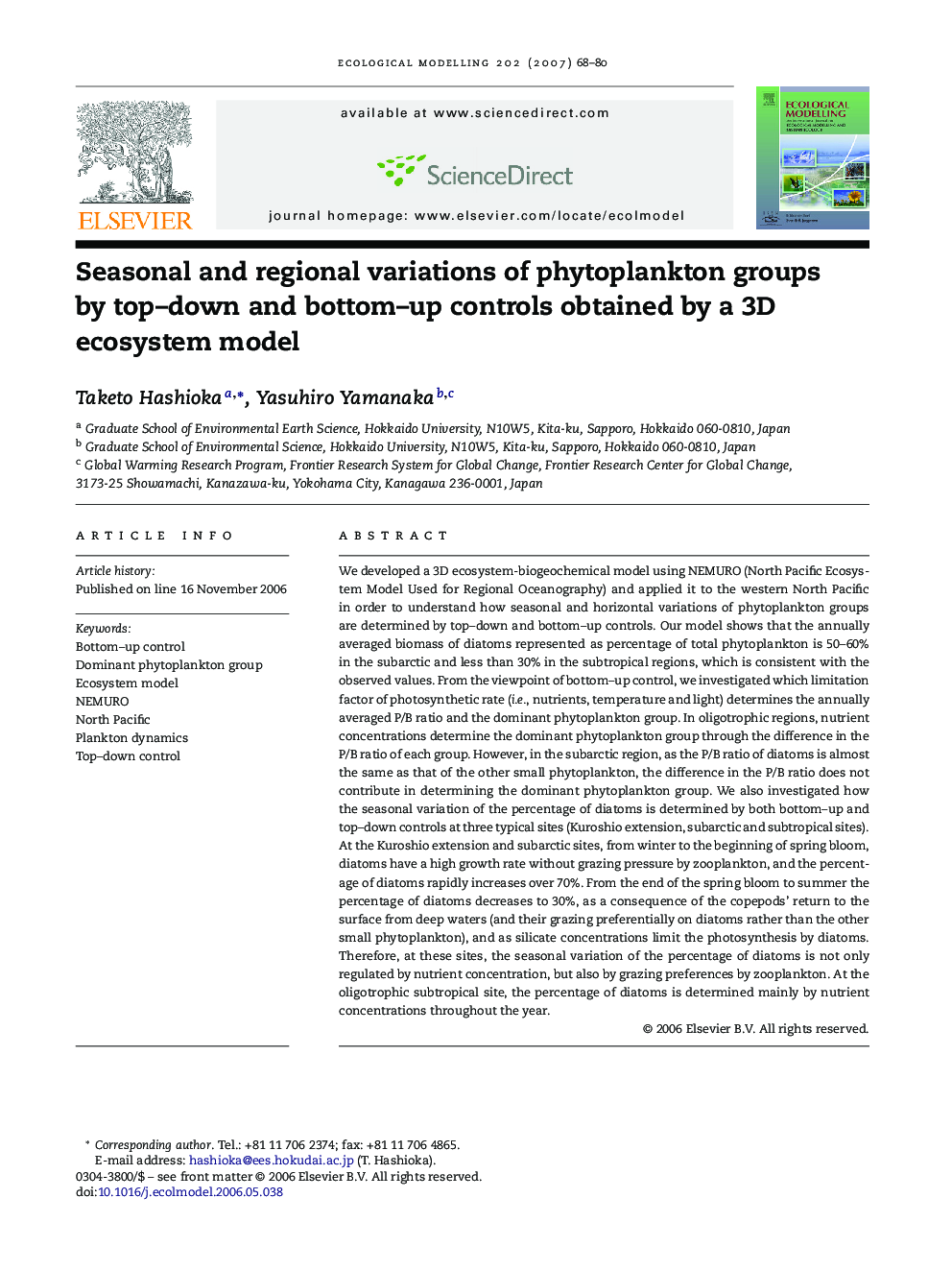| کد مقاله | کد نشریه | سال انتشار | مقاله انگلیسی | نسخه تمام متن |
|---|---|---|---|---|
| 4378735 | 1617553 | 2007 | 13 صفحه PDF | دانلود رایگان |

We developed a 3D ecosystem-biogeochemical model using NEMURO (North Pacific Ecosystem Model Used for Regional Oceanography) and applied it to the western North Pacific in order to understand how seasonal and horizontal variations of phytoplankton groups are determined by top–down and bottom–up controls. Our model shows that the annually averaged biomass of diatoms represented as percentage of total phytoplankton is 50–60% in the subarctic and less than 30% in the subtropical regions, which is consistent with the observed values. From the viewpoint of bottom–up control, we investigated which limitation factor of photosynthetic rate (i.e., nutrients, temperature and light) determines the annually averaged P/B ratio and the dominant phytoplankton group. In oligotrophic regions, nutrient concentrations determine the dominant phytoplankton group through the difference in the P/B ratio of each group. However, in the subarctic region, as the P/B ratio of diatoms is almost the same as that of the other small phytoplankton, the difference in the P/B ratio does not contribute in determining the dominant phytoplankton group. We also investigated how the seasonal variation of the percentage of diatoms is determined by both bottom–up and top–down controls at three typical sites (Kuroshio extension, subarctic and subtropical sites). At the Kuroshio extension and subarctic sites, from winter to the beginning of spring bloom, diatoms have a high growth rate without grazing pressure by zooplankton, and the percentage of diatoms rapidly increases over 70%. From the end of the spring bloom to summer the percentage of diatoms decreases to 30%, as a consequence of the copepods’ return to the surface from deep waters (and their grazing preferentially on diatoms rather than the other small phytoplankton), and as silicate concentrations limit the photosynthesis by diatoms. Therefore, at these sites, the seasonal variation of the percentage of diatoms is not only regulated by nutrient concentration, but also by grazing preferences by zooplankton. At the oligotrophic subtropical site, the percentage of diatoms is determined mainly by nutrient concentrations throughout the year.
Journal: Ecological Modelling - Volume 202, Issues 1–2, 24 March 2007, Pages 68–80